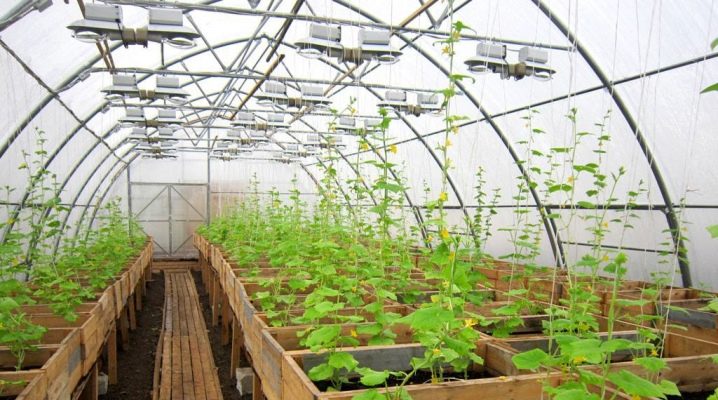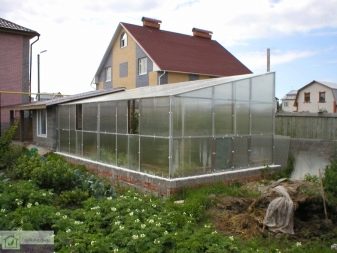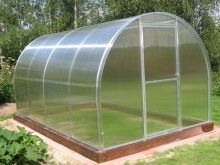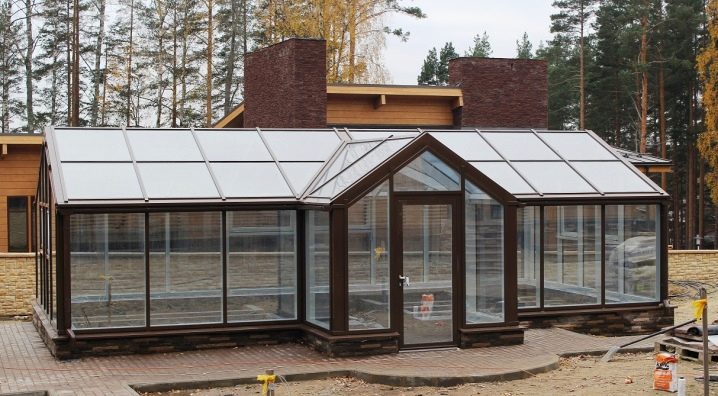How to ensure year-round operation of the greenhouse: options for insulation
Year-round greenhouses have become popular not only among farmers, but also among many owners of country houses. You can grow greens, cucumbers, tomatoes, berries or flowers in such a greenhouse all year round. To create the necessary microclimate for plants, the greenhouse needs to be properly designed and warmed. The process of preparing the greenhouse for wintering has several aspects that can be implemented in parallel, and to increase the yield they must be performed correctly.
Where to begin?
You need to start by choosing the right place for the installation of a future greenhouse. The place should be well lit, the building should not fall shadow of neighboring buildings or trees. The smoother the plot, the better. When choosing a place you should pay attention to the possibility of protection from the wind, proximity to sources of water and electricity.It is also important to think of a convenient approach.
The correct location of the greenhouse will help save energy and avoid heat loss.
Soil preparation
Arranging the greenhouse for the winter season, first of all, you should carefully prepare the ground. Maximum thermal insulation will provide a strip foundation.
Soil preparation can be divided into stages.
- First, the layout of the future foundation is made. After marking set rag, which is usually done from the boards. This obnozka helps determine the internal and external boundaries of the base.
- The next step involves excavation at the desired depth. Sand is poured at the bottom of the excavated trench, which will protect the supporting structure. If possible, take care of waterproofing the bottom side.
- Formwork is installed on the prepared trench. The most important requirement is its strength.
- Having defined the formwork, you can proceed to the reinforcement. After installing the reinforcing mesh structure will be even stronger.
- The last stage - pouring concrete. Before this, it is recommended to lubricate the walls of the formwork with an aqueous emulsion composition, so after hardening the mixture from it it will be easier to separate the elements.
Tillage
You can warm the soil with your own hands with the help of heat insulating material. It is used to separate the cold from the top layer of the earth, which will be heated by light and air. Preparing the ground is better to start in the spring, when it is already warm enough. Usually as a heat insulating material use branches, shavings, sawdust, planks, etc.
Leaves should not be used - they quickly decompose. Insulation buries shallow. Most beds will have enough left 20 centimeters of soil.
The described biological heating operates as follows.
- Initially, under the influence of natural processes begin to decompose organic matter. At the same time, thermal energy is released.
- Heat rises, simultaneously warming the soil.
- It is worth noting that instead of natural material, you can use artificial. For example, you can warm the soil with penoplex.
Sealing and insulation of the greenhouse construction
When setting up a glass greenhouse or polycarbonate greenhouse, two main points should be considered. First, the warmed-up version of a greenhouse must pass a sufficient amount of light. Secondly, the upgraded version of the greenhouse should be sealed as much as possible.Heat leakage should be kept to a minimum.
You need to start with the sealing of all joints and openings that can transmit heat. This task will perfectly cope sealants. You can also use different types of mastic or rubberized gaskets.
The second stage is a bit more complicated. As you know, the best heat insulator is air. It will be logical to insulate a greenhouse with the help of the second layer, while it is important to remember that the greenhouse, first of all, must transmit light.
There are two main methods:
- finishing the inside of the greenhouse film;
- creation of an additional layer of polycarbonate.
Film
It is best of all to keep the covering material warm — the film “with bubbles”; therefore, when preparing a greenhouse for winter, it should be used. The denser the material, the better. The film can be laid in two layers, which will create a thermos effect, so the greenhouse will retain heat even better.
The film is attached to the arches of the greenhouse, the distance can be chosen by eye. The main thing is to fit the material tightly.
Polycarbonate
When creating an additional layer of greenhouse is better to act in stages.
- First you need to cut the sheets of polycarbonate. Sheet thickness should not exceed 16 mm.
- Cut sheets lined up under the frame, and then connected with the help of special profiles. If you join the butt-butt joint sheets, you will have to walk around the joints once again with a sealant. Otherwise, the heat loss will increase.
- Polycarbonate sheets are fixed with screws with plastic caps. This creates a thermal break, which prevents the joints from becoming frozen.
- Reprocessing all joints plating.
Compliance with these requirements will ensure year-round operation of the greenhouse.
Tambour
The presence of the vestibule at the entrance contributes to additional insulation. In addition, it can accommodate garden tools and tools. The opening for the door of the vestibule is usually made of timber, and then attached to the supporting structure. The lintel between the door and the greenhouse itself is sheathed with polycarbonate.
Do not forget about the sealing of the joints, for the doors will be useful sealing gum.
Extra light
The competitive feature of the winter greenhouse will be the presence of additional lighting. In winter, daylight is shorter and, in addition, daylight affects different plants differently.In order to ensure their comfortable growth, it is necessary to provide an additional lighting system. The right choice is a combination of different sources. Fluorescent lamps, economical sodium and ordinary with yellow light together are a worthy solution.
Heated interior space
There are various ways to heat the internal space, we consider the main ones.
- Water heating. Water heating in most designs is implemented by heating boilers. If the heated greenhouse is small, you can limit heating devices only on one side of the room. Convection flows will be sufficient. The advantage of water heating is that it is safer than electric or gas. It is also worth considering that the specificity of polycarbonate lies in the fact that it does not tend to collect moisture on the walls in winter. Thus, moisture will naturally return to the ground.
Water heating is considered to be one of the most effective and profitable options for heating a greenhouse.
- Infrared radiation. Of the benefits of infrared heaters can be distinguished convenience.There is no need to monitor the stove, toss firewood. The air heats up evenly. Infrared heaters do not take up much space and are also easy to install. Cons - the high cost of equipment and installation.
- Gas heating. Special gas equipment is produced, which is designed to work in greenhouses. A significant disadvantage is that it must be connected to the general gas supply system, from which it follows that this requires a special permit. Of course, you can use the cylinders, but on the cylinders, you can pretty quickly go broke. One is not enough even for a month.
- Electric heaters. The most ineffective option. A conventional electric heater is unlikely to cope with even the smallest greenhouse, and the use of a larger number of electrical appliances will cause an excessive load on the network. And the electric bill will be impressive.
In the process of building insulation, it is important to take into account not only the technical characteristics of future heating systems, but also factors that you can simply ignore at first. This concerns, for example, the installation site of the future greenhouse.It should be remembered that when preparing a greenhouse for the winter, first of all, it is necessary to focus on creating a favorable microclimate for future plants.
If you conduct insulation in accordance with all requirements and technical regulations, you can increase the productivity of the greenhouse by 100% or more. How to insulate in the cold season - the personal choice of each. It depends on financial possibilities and on the availability of time. But if done correctly, the greenhouse will give a fresh crop all year round.
How to warm the greenhouse, see the next video.














































